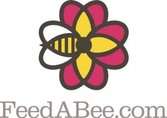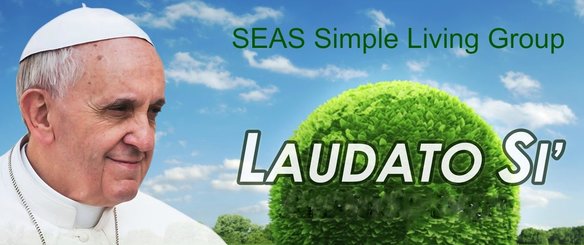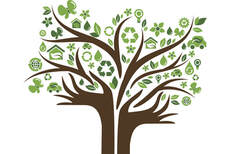Laudato Si
In 2015, Pope Francis presented to the world the encyclical “Laudato Si” or “Care for Our Common Home”. The title “Laudato Si” is taken from the beginning of St. Francis’s prayer “Canticle of the Creation” and reminds us that the earth “is like a sister with whom we share our lives.”
Throughout the encyclical, Pope Francis strives to balance concern for the environment with the importance of human live and its place in creation. Just a few examples of the Pope’s writing:
•The environment does not exist in a vacuum. Everything is related; the environment is a relationship existing between nature and the society which lives in it. (no. 139)
•We are capable of rising above ourselves, choosing again what is good, and making a new start. (no. 205)
•We are agreed today that the earth is essentially a shared inheritance, whose fruits are meant to benefit everyone. (no. 93)
• …human life is grounded in three fundamental and closely intertwined relationships: with God, with our neighbor and with the earth itself. [no. 66]
This encyclical is beautifully written and it is easy to read! While some may view the letter as rather long, know that it can be read a few paragraphs at a time to get a sense for the importance and implications of this glorious document.
Laudato Si is not only a call for global action but an appeal for a deep inner conversion. It is an invitation to change direction by taking on the task of caring for our common home. How are you called to care for God’s creation?
To view the document: link: https://laudatosi.com/watch
For other great resources, check out the United States Conference of Catholic Bishops’ web page: link = http://www.usccb.org/about/leadership/holy-see/francis/pope-francis-encyclical-laudato-si-on-environment.cfm
In 2015, Pope Francis presented to the world the encyclical “Laudato Si” or “Care for Our Common Home”. The title “Laudato Si” is taken from the beginning of St. Francis’s prayer “Canticle of the Creation” and reminds us that the earth “is like a sister with whom we share our lives.”
Throughout the encyclical, Pope Francis strives to balance concern for the environment with the importance of human live and its place in creation. Just a few examples of the Pope’s writing:
•The environment does not exist in a vacuum. Everything is related; the environment is a relationship existing between nature and the society which lives in it. (no. 139)
•We are capable of rising above ourselves, choosing again what is good, and making a new start. (no. 205)
•We are agreed today that the earth is essentially a shared inheritance, whose fruits are meant to benefit everyone. (no. 93)
• …human life is grounded in three fundamental and closely intertwined relationships: with God, with our neighbor and with the earth itself. [no. 66]
This encyclical is beautifully written and it is easy to read! While some may view the letter as rather long, know that it can be read a few paragraphs at a time to get a sense for the importance and implications of this glorious document.
Laudato Si is not only a call for global action but an appeal for a deep inner conversion. It is an invitation to change direction by taking on the task of caring for our common home. How are you called to care for God’s creation?
To view the document: link: https://laudatosi.com/watch
For other great resources, check out the United States Conference of Catholic Bishops’ web page: link = http://www.usccb.org/about/leadership/holy-see/francis/pope-francis-encyclical-laudato-si-on-environment.cfm

In answering the call of stewardship of our earth, the Simple Living Group is planning to restore 10 acres of prairie on our future building site, which will provide wildflowers for native pollinators.
The pollinator prairie project is moving along as planned thanks to the help of a number of parishioners and their families. During a few hot days in early June, the 10 acre site was mowed in preparation for treatment of spotted knapweed and other invasive plants. In early July, the site was treated thanks to the generous donation of time and equipment use.
There will be one more mowing and treatment in the fall before the native grass and wildflower seed mix is planted in November.
Thanks to those who helped collect native wildflower seeds for Our Common Home Prairie restoration project. The weather was perfect for being outside and we had a productive morning. A few of the species we found to collect seeds from included common milkweed, round-headed bush clover, silky prairie clover, and bergamot. The seeds will be added to the native prairie seed mix provided by the U.S. Fish and Wildlife Service’s Partners for Fish and Wildlife program, the Feed A Bee grant, and parishioner donations. The 10 acre restoration site will be planted in early winter.
11/30/18 Update-After over a year of planning, site prep, and help from parishioners, their families and friends, and a couple partnering organizations, Our Common Home Prairie was seeded to native grasses and wildflowers this past Wednesday. The Simple Living group took on the 10 acre prairie restoration project on a portion of SEAS’ future building site in response to Pope Francis’ call to care for God’s creation. There will still be more work in the next 2 years with mowing and weeding before the native plants are established, but we are excited to have reached this milestone in the project! For more information check out the Simple Living Group’s web page: http://www.seasholmen.org/simple-living-discussion-group.html #feedabee
The pollinator prairie project is moving along as planned thanks to the help of a number of parishioners and their families. During a few hot days in early June, the 10 acre site was mowed in preparation for treatment of spotted knapweed and other invasive plants. In early July, the site was treated thanks to the generous donation of time and equipment use.
There will be one more mowing and treatment in the fall before the native grass and wildflower seed mix is planted in November.
Thanks to those who helped collect native wildflower seeds for Our Common Home Prairie restoration project. The weather was perfect for being outside and we had a productive morning. A few of the species we found to collect seeds from included common milkweed, round-headed bush clover, silky prairie clover, and bergamot. The seeds will be added to the native prairie seed mix provided by the U.S. Fish and Wildlife Service’s Partners for Fish and Wildlife program, the Feed A Bee grant, and parishioner donations. The 10 acre restoration site will be planted in early winter.
11/30/18 Update-After over a year of planning, site prep, and help from parishioners, their families and friends, and a couple partnering organizations, Our Common Home Prairie was seeded to native grasses and wildflowers this past Wednesday. The Simple Living group took on the 10 acre prairie restoration project on a portion of SEAS’ future building site in response to Pope Francis’ call to care for God’s creation. There will still be more work in the next 2 years with mowing and weeding before the native plants are established, but we are excited to have reached this milestone in the project! For more information check out the Simple Living Group’s web page: http://www.seasholmen.org/simple-living-discussion-group.html #feedabee

